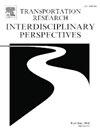Understanding Sofia’s travel dynamics: Study of private traffic patterns and urban mobility
IF 3.9
Q2 TRANSPORTATION
Transportation Research Interdisciplinary Perspectives
Pub Date : 2025-02-10
DOI:10.1016/j.trip.2025.101352
引用次数: 0
Abstract
Transportation and mobility provide a foundation for sustainable society, facilitating the efficient movement of people, goods, and services across diverse spatial and temporal scales. They not only support economic activities and enhance social interactions but also enable urban development, global trade, and access to essential resources and opportunities. This study introduces a comprehensive framework for analysing the dynamics of urban transport and travel behaviours related to private vehicles, considering different temporal and spatial dimensions in Sofia, Bulgaria. By integrating high-resolution data from TomTom’s Traffic Stats with Geographic Information Systems (GIS), the study develops an advanced approach that merges various datasets, including traffic flow, density, and energy consumption, thereby facilitating multidimensional assessments of urban challenges at the city level. The significant benefit of this research is its potential for scalability and relevance to other metropolitan areas, especially those encountering comparable issues related to rising urban density, traffic congestion, and environmental pressures. The findings reveal notable traffic fluctuations, with peak congestion during weekday rush hours, particularly concentrated in central business districts and major arterial routes. Persistent congestion areas are also identified on weekdays and weekends, highlighting critical zones requiring infrastructural improvements and optimised traffic management strategies. The results underscore the importance of implementing sustainable urban mobility policies, optimising transport infrastructure, and strategies for climate adaptation.
求助全文
约1分钟内获得全文
求助全文
来源期刊

Transportation Research Interdisciplinary Perspectives
Engineering-Automotive Engineering
CiteScore
12.90
自引率
0.00%
发文量
185
审稿时长
22 weeks
 求助内容:
求助内容: 应助结果提醒方式:
应助结果提醒方式:


